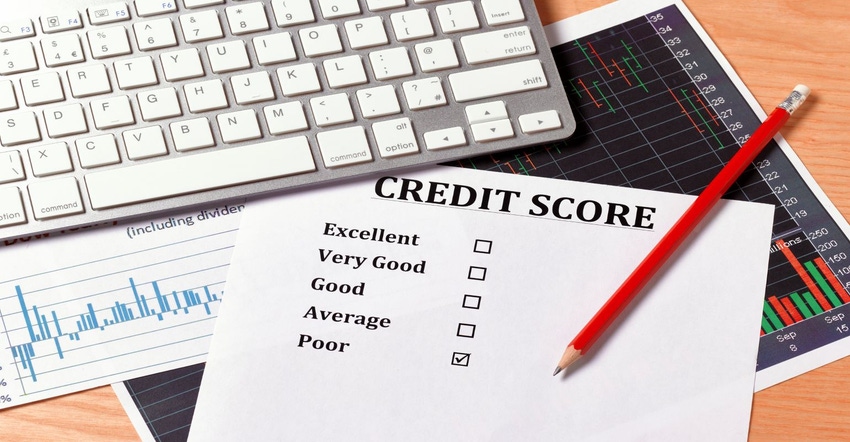
Rapid change is occurring in the domestic and agricultural economies. It appears that a good old-fashioned recession is looming in the general and global economies. Coupled with possible margin compression, a situation where prices fall below variable and fixed costs, and credit may not flow as readily as it has in recent years. Whether financing through traditional lenders such as Farm Credit, commercial banks, or Farm Service Agency (FSA) or a nontraditional lender such as equipment and operating financing, a factor going into your credit risk profile is the status of your credit score and the report behind the score.
Historically, a 700-credit score was viewed as the “gold standard” where credit was readily available and sometimes at discounted interest rates. Insurance companies would often use credit scores to distinguish qualifiers and set their rates.
The FICO credit scores are definitely changing. A little over a decade ago during the Great Recession the average credit score was 686. Fast-forward to the pandemic and average scores have jumped to 713 with the latest average at 716. Just under half of the FICO credit scores are 750 and above compared to 38 percent a decade ago. What has caused the shift in credit scores? Stimulus checks, increased savings, reduced balances on credit cards, and low unemployment during the pandemic have boosted credit scores within the last two years.
Moving forward, what are some of the benchmarks concerning FICO scores? A good solid score would be 670 to 739. A very good score would range between 740 and 799. An exceptional score would exceed 800, with only 23 percent of individuals achieving this level nationwide.
Tips
Maintain the average balance on your credit cards between 10 and 30 percent of the total limit. The average balance is 31 percent of the limit, up from 27 percent one decade ago.
Make your payments on a timely basis, which amounts to over one-third of your credit score rating.
Check your credit reports for any abnormal activities. According to Dr. Alex White, a professor of personal finance at Virginia Tech, nearly 20 percent of credit reports contain mistakes or fraudulent activities.
The next 12 to 24 months will be a period of tightening credit as lenders and regulators position for the economic down cycle. Is 700 high enough? Yes, but it is important to take the necessary steps to solidify your credit score and credit report. Moving forward, your credit history will be an increasing variable in agricultural credit assessments.
Source:David Kohl, who is solely responsible for the information provided and is wholly owned by the source. Informa Business Media and all its subsidiaries are not responsible for any of the content contained in this information asset.
About the Author(s)
You May Also Like






